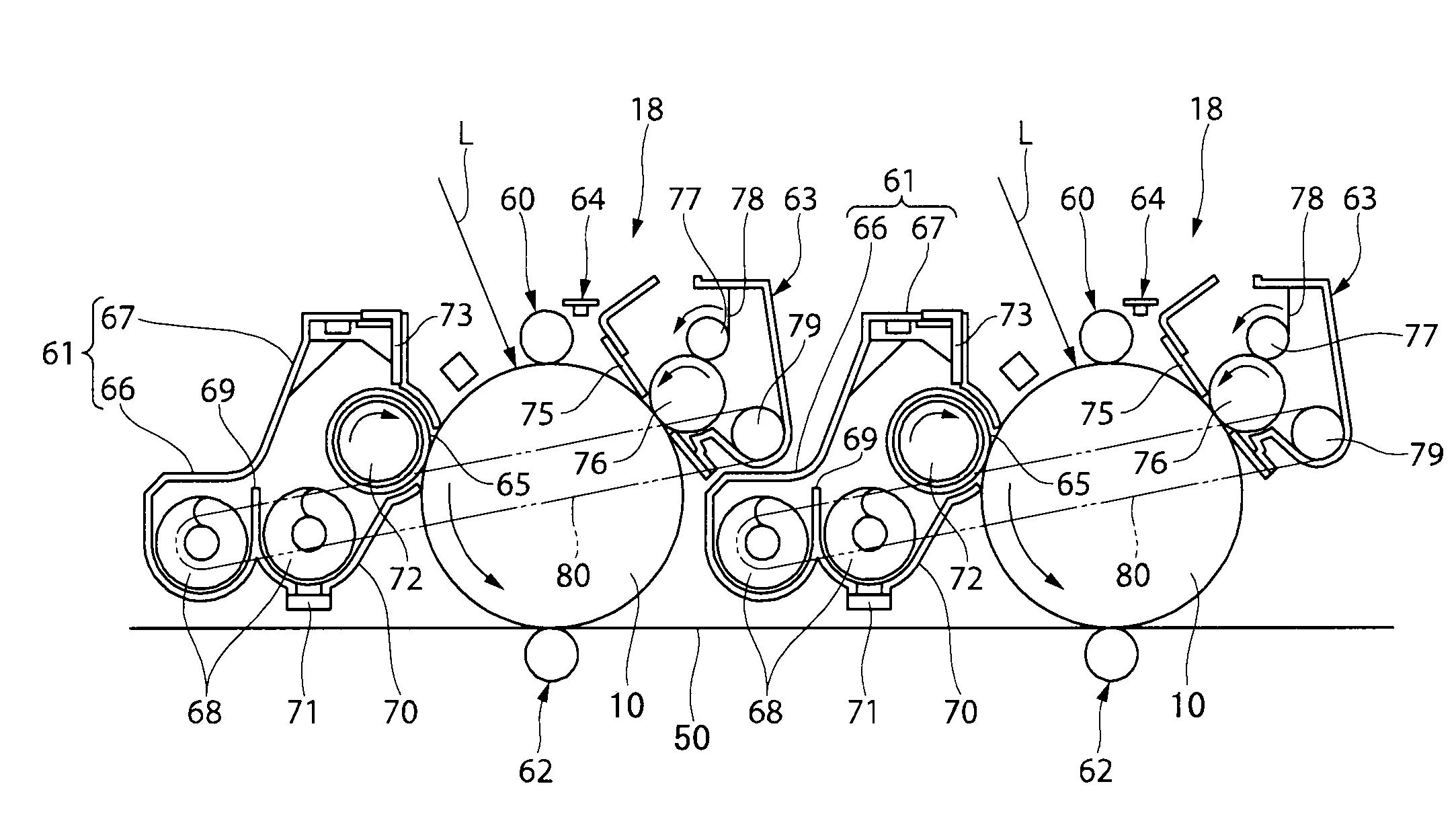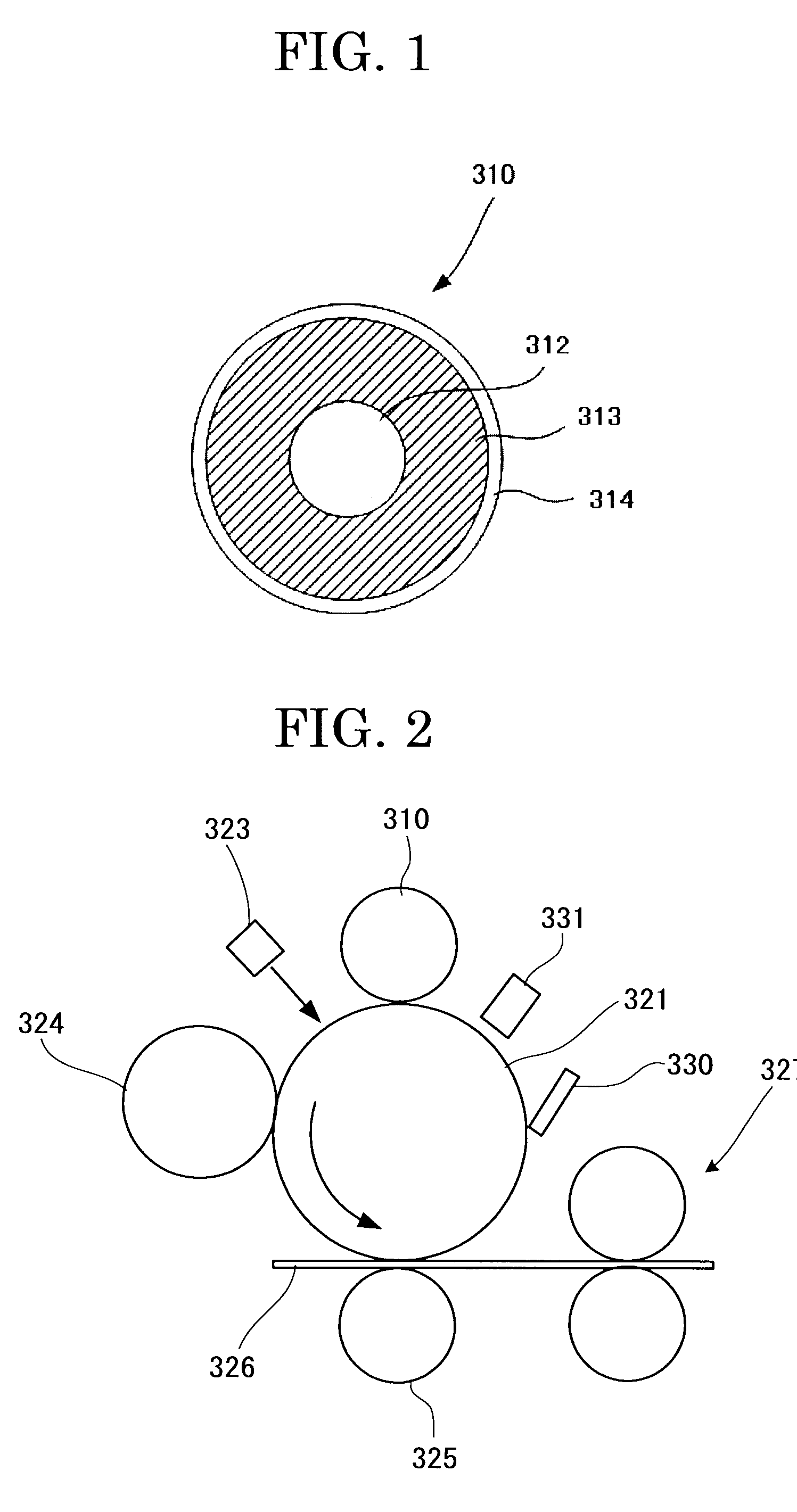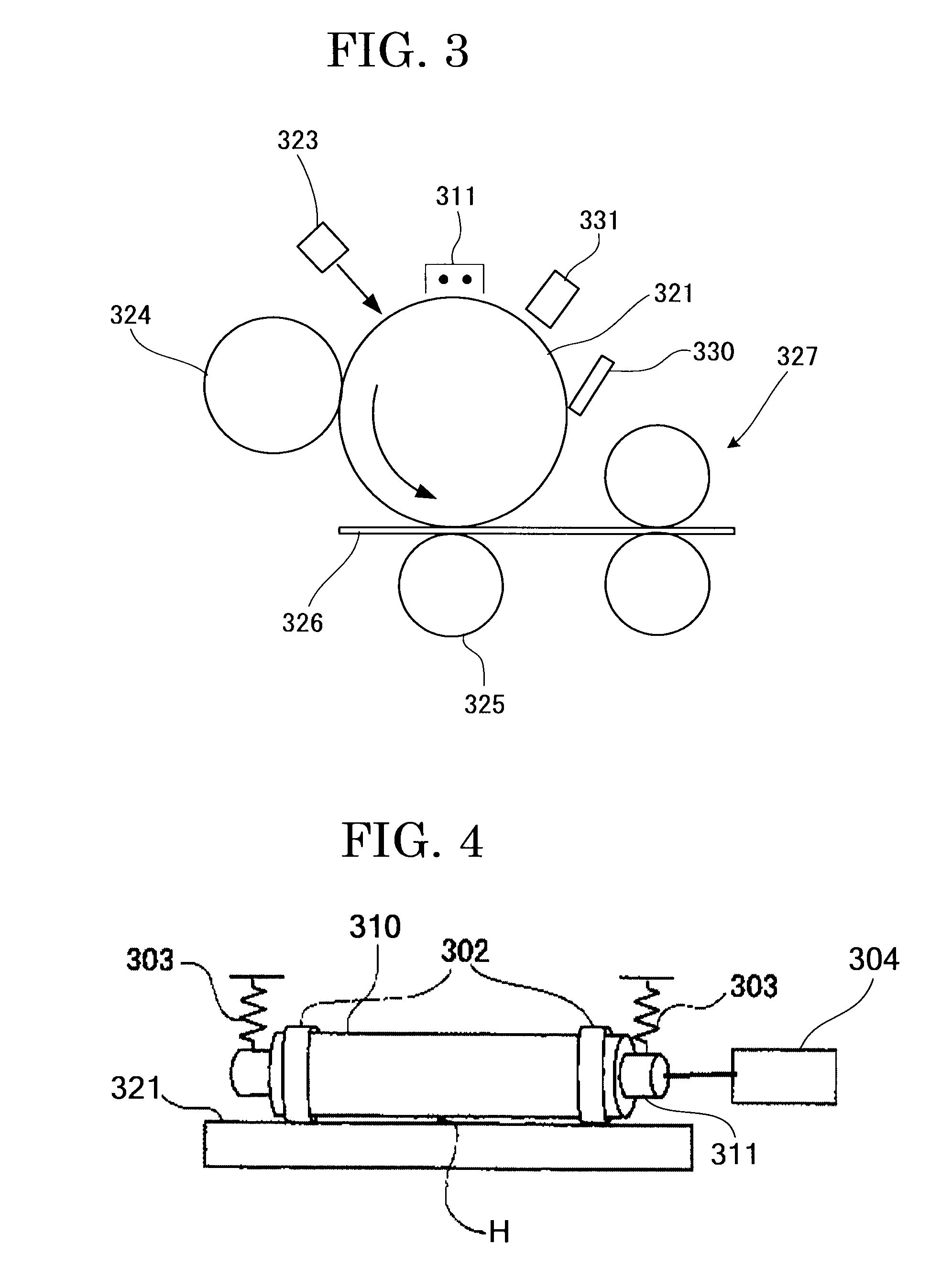Toner, image forming apparatus, image forming method, and process cartridge
a technology of image forming apparatus and process cartridge, which is applied in the direction of electrographic process apparatus, electrographic process, instruments, etc., can solve the problems of insufficient low-temperature fixing property, energy-saving fixing property, and large so as to achieve excellent chargeability, transferability, and anti-spent property. , the effect of reducing the size of the entire image forming apparatus
- Summary
- Abstract
- Description
- Claims
- Application Information
AI Technical Summary
Benefits of technology
Problems solved by technology
Method used
Image
Examples
examples
[0560]Hereinafter, the present invention will be described in detail referring to specific Examples, however, the present invention is not limited to the disclosed Examples. On the contrary, the present invention is intended to cover various modifications and equivalent arrangements included within the spirit and scope of the appended claims.
[0561]In the following Synthesis Examples, Production Examples, Examples and Comparative Examples, physical property values of polyester resins and rosin compounds, and the weight average particle diameter of toners were measured according to the following methods.
[0562]
[0563](1) Preparation of Sample
[0564]Ten grams of resin was melted at 170° C. on a hot plate for 2 hours. Subsequently, the resin sample was naturally cooled for 1 hour in a state of being open to the atmospheric air at a temperature of 25° C. and a relative humidity of 50%. Thereafter, the resultant resin sample was pulverized by a coffee mill (National MK-61M) for 10 seconds.
[0...
synthesis example a1
[0589]—Synthesis of Acrylic Acid-Modified Rosin—
[0590]Into a 10 L flask equipped with a fractionating column, a reflux condenser, and a receiver, 5,630 g of an unpurified tall rosin and 610 g of acrylic acid were added, the mixture was heated to a temperature ranging from 160° C. to 210° C. in 2 hours, the mixture was reacted at 210° C. for 3 hours, and then distilled at 210° C. under a reduced pressure of 4 kPa, thereby a rosin modified with acrylic acid (acrylic acid-modified rosin) was synthesized.
[0591]The amount of an abietic acid contained in the unpurified tall rosin which had been used in production of the thus obtained acrylic acid-modified rosin, was 35.9% by mass, and the amount of the abietic acid contained in the acrylic acid-modified rosin was 14.2% by mass.
synthesis example a2
[0592]—Synthesis of Itaconic Acid-Modified Rosin—
[0593]Into a 10 L flask equipped with a fractionating column, a reflux condenser, and a receiver, 5,630 g of an unpurified tall rosin which had been used in production of the acrylic acid-modified rosin, and 1,130 g of itaconic acid were added, the mixture was heated to a temperature ranging from 160° C. to 210° C. in 2 hours, the mixture was reacted at 210° C. for 3 hours, and then distilled at 210° C. under a reduced pressure of 4 kPa, thereby a rosin modified with itaconic acid (itaconic acid-modified rosin) was synthesized.
[0594]The amount of an abietic acid contained in the thus obtained itaconic acid-modified rosin was 4.1% by mass.
PUM
| Property | Measurement | Unit |
|---|---|---|
| Percent by mass | aaaaa | aaaaa |
| Percent by mass | aaaaa | aaaaa |
| Softening point | aaaaa | aaaaa |
Abstract
Description
Claims
Application Information
 Login to View More
Login to View More - R&D
- Intellectual Property
- Life Sciences
- Materials
- Tech Scout
- Unparalleled Data Quality
- Higher Quality Content
- 60% Fewer Hallucinations
Browse by: Latest US Patents, China's latest patents, Technical Efficacy Thesaurus, Application Domain, Technology Topic, Popular Technical Reports.
© 2025 PatSnap. All rights reserved.Legal|Privacy policy|Modern Slavery Act Transparency Statement|Sitemap|About US| Contact US: help@patsnap.com



